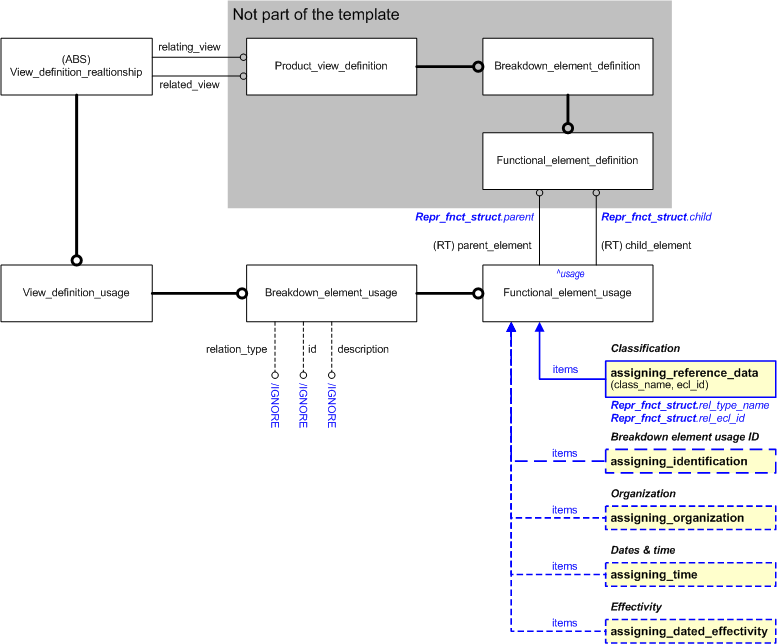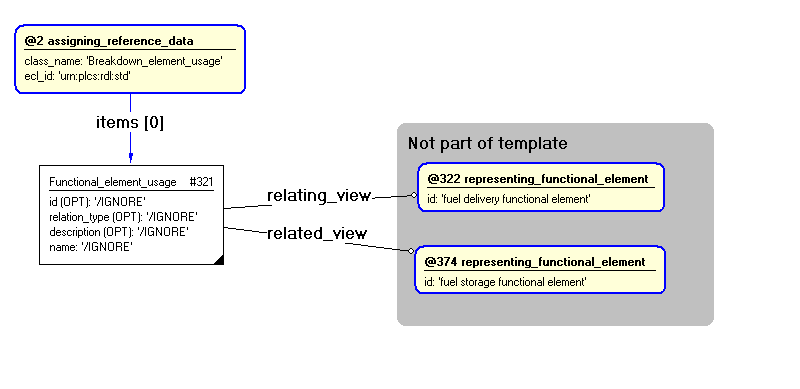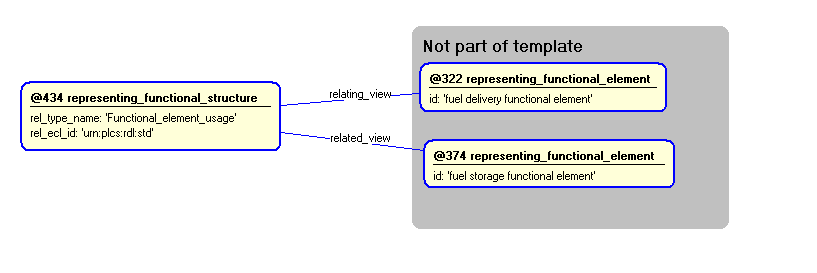
| Template:— representing_functional_structure (repr_funct_structr) Capability:representing_breakdown_structure |
Date: 2007/09/28 12:44:08 Revision: 1.12 |
This section specifies the template representing_functional_structure.
NOTE The template has been defined in the context of the capability representing_breakdown_structure which provides an overall description of the relevant parts of the ISO 10303-239 information model and a description of related templates.
NOTE An explanation of a template and the associated instantiation path is provided in the Template overview section.
This template describes how to represent a structure of elements in a functional breakdown.


target
is the parameter to which the
Functional_element_usage
is bound.
| Entity in path | Value | Inherited from |
| Functional_element_usage.id | '/IGNORE' | View_definition_relationship.id |
| Functional_element_usage.relation_type | '/IGNORE' | View_definition_relationship.relation_type |
| Functional_element_usage.description | '/IGNORE' | View_definition_relationship.description |


NOTE this characterization is optional.
The Functional_element_usage may be identified by assigning it an identifier through the use of template assigning_identification.
NOTE Identification is described in C001: assigning_identifiers.
NOTE this characterization is optional.
An organization can be assigned in a given role, such as "creator" or "owner", to a relation between breakdown elements. This is represented by assigning the template assigning_organization to the Functional_element_usage. The role of the assignment is represented by classifying the assignment by the use of reference data.
NOTE The assignment of an organization is described in the capability C016: representing_person_organization.
NOTE this characterization is optional.
The time and date when the functional breakdown structure was created can be represented by assigning a date and time to the Functional_element_usage using the template assigning_time with the Date_time being classified as a type of "Date actual creation" (urn:plcs:rdl:std:Date actual creation).
NOTE The assignment of dates is described the capability C036: assigning_date_time.
NOTE this characterization is optional.
The time period over which a functional element usage is effective can be set by using the template assigning_dated_effectivity.
NOTE The use of effectivity is described in the capability: C006: assigning_effectivity.
© OASIS 2010 — All rights reserved